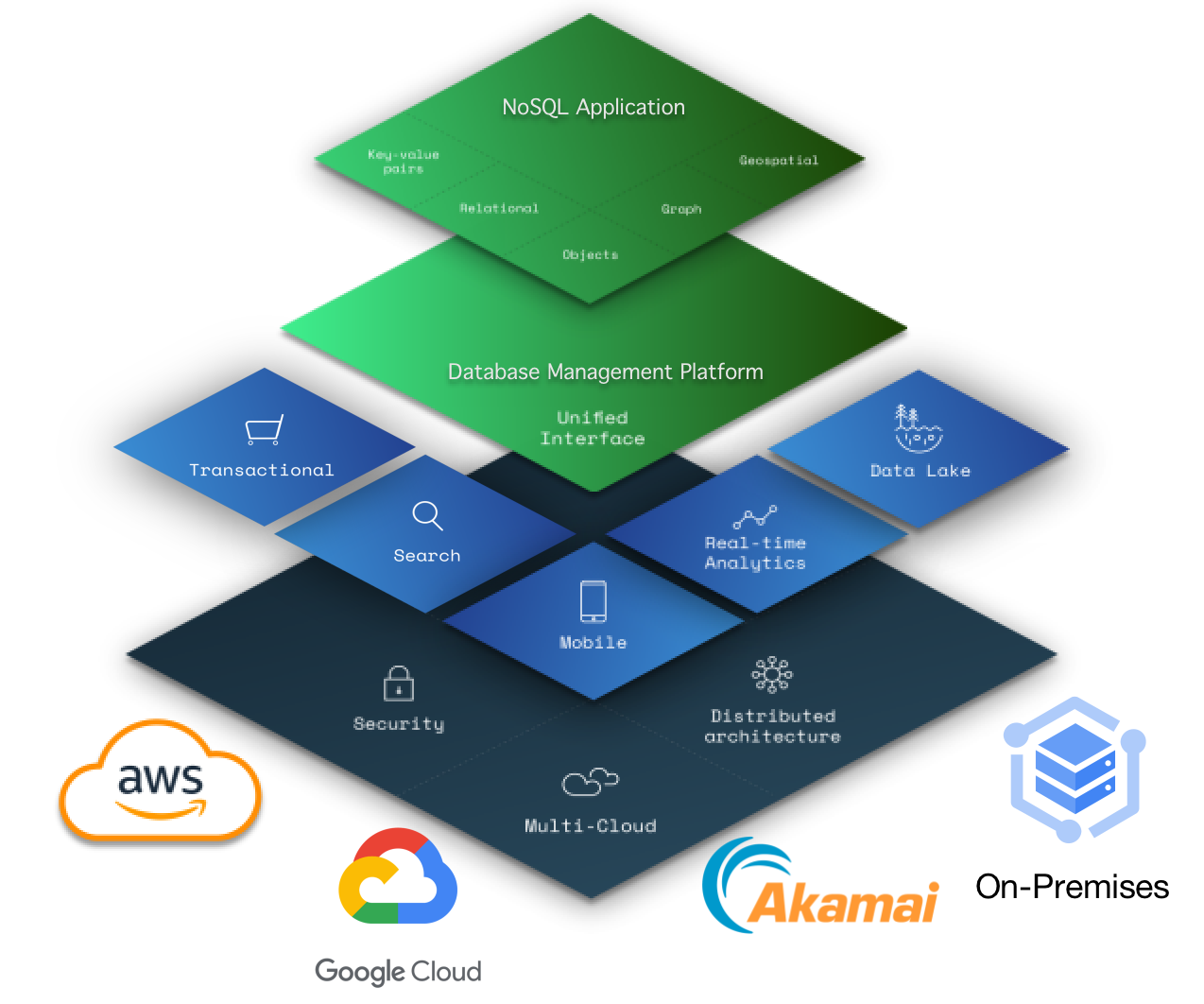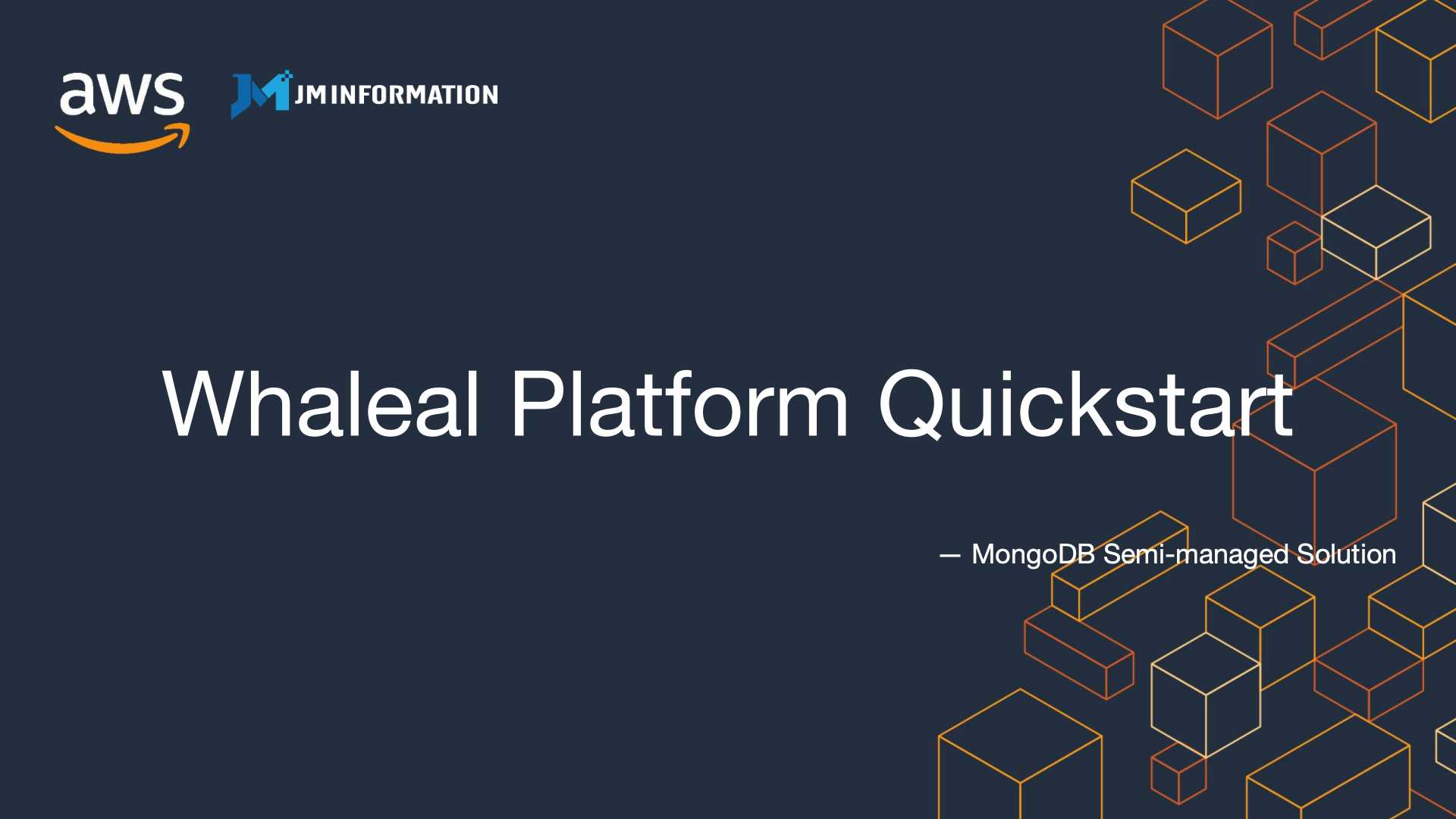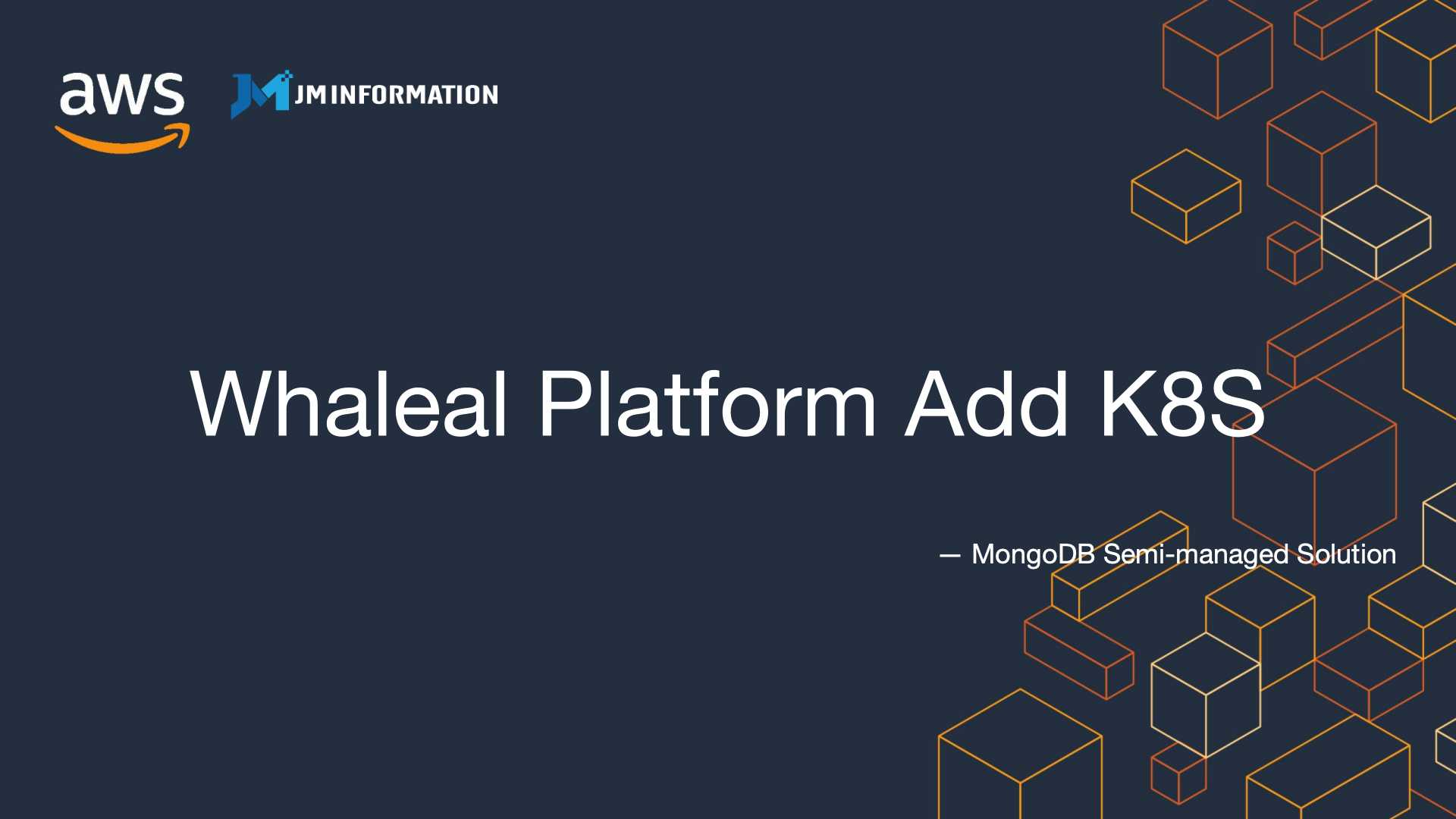Whaleal Platform (WAP) is a monitoring, management, and backup platform designed for MongoDB. It supports AWS, and GCP cloud platforms, as well as private deployment, providing customers with more options.



Fully-managed Service
Semi-managed Service
Self-managed Service

MongoDB Fully-managed Service
- Less Hassle : You don’t have to worry about the nitty-gritty of database management. The service takes care of everything from backups to updates, so you can focus on running your business.
- Scalability : Need to handle more data or traffic? No problem. Managed services can scale up or down automatically, so you’re never stuck with a system that can’t keep up.
- Security : These services invest heavily in top-notch security features. They have experts constantly monitoring and updating to protect your data, which is usually more than most businesses can afford on their own.
- High Availability : You get built-in redundancy and failover solutions. This means your database is up and running even if something goes wrong, minimizing downtime.
- Performance Optimization : The service providers fine-tune performance so your queries run fast and efficiently. You’re not left struggling with slow database operations.
- Expert Support : Access to support teams who know their stuff and can solve issues quickly, rather than relying on in-house expertise.
- Automatic Backups : Regular backups are handled for you, so your data is safe and can be restored quickly if needed.
- Big-Picture Costs : The service providers have to cover a lot of costs, from infrastructure to ongoing maintenance. They spread these costs over all their customers, but if you’re a smaller user, it can feel like you’re shouldering a bigger share.
MongoDB Semi-managed Service
- Sweet Spot Between DIY and Full Managed : Think of a semi-managed service as the middle ground. You get a lot of the benefits of full management without handing over all control. It’s like having a helpful co-pilot instead of flying solo or giving up the controls entirely.
- Less Overhead : You don’t have to worry about every little detail. The semi-managed service handles some of the heavy lifting—like backups, updates, and monitoring—so you can focus on your core tasks. It’s a bit like having a team of experts in your corner without paying for the full package.
- Customizability : You still get to make a lot of decisions about your database setup and configuration. You have the flexibility to tweak things to suit your needs without being completely locked into someone else’s setup.
- Cost-Effective : It’s generally cheaper than a fully managed service because you’re sharing the responsibility. You pay for the support you need, but you still handle some of the management yourself, keeping costs lower.
- Balancing Act : You’ll need to stay on top of certain tasks and be proactive about things like performance tuning and scaling. It’s a bit of a balancing act between having support and maintaining control.
- Support on Call : If things go sideways or you need a hand with something tricky, you’ve got support available. It’s like having an expert on standby to jump in when needed, without them doing everything for you.
- Security and Reliability : Semi-managed services usually offer strong security measures and reliability. You get the peace of mind that your data is well protected, with support to ensure things run smoothly.
MongoDB Self-managed Service
- DIY Approach : When you go manual, you’re in charge of everything—from setting up and configuring the database to handling backups and updates. It’s like being the captain of your own ship, which can be empowering but also demanding.
- Cost Savings : On the flip side, manual management can save you money upfront since you’re not paying for a managed service. You’re just covering the costs of your own team’s time and resources.
- Custom Control : You get to customize everything to your exact needs. Whether it’s specific configurations or unique performance tuning, you’re in the driver’s seat.
- Learning Curve : Handling everything yourself means you and your team need to be well-versed in database management. It can be a great learning experience, but it also means staying updated with the latest best practices and technologies.
- Increased Workload : You’ll be responsible for all maintenance tasks, such as updates, patches, and backups. It’s more work, and if something goes wrong, it’s all on you to fix it.
- Potential for Errors : Without the built-in safeguards of a managed service, there’s a higher risk of human error. Mistakes in manual management can lead to downtime or data loss, which can be costly.
- Scalability Challenges : Scaling your database to handle more data or users can be more complex and time-consuming when you’re managing it yourself. You’ll need to plan and execute these changes manually.


What our users say
“This MongoDB management tool is fantastic, especially when it comes to alert diagnostics. It provides me with the most timely and accurate feedback, allowing for quick adjustments and database optimizations.”
“After comparing Whaleal Platform and Atlas, we decided to go with Whaleal Platform. Their semi-managed solution gives us a similar experience to Atlas Fully-Managed services, but with the added benefit of cost savings.”







